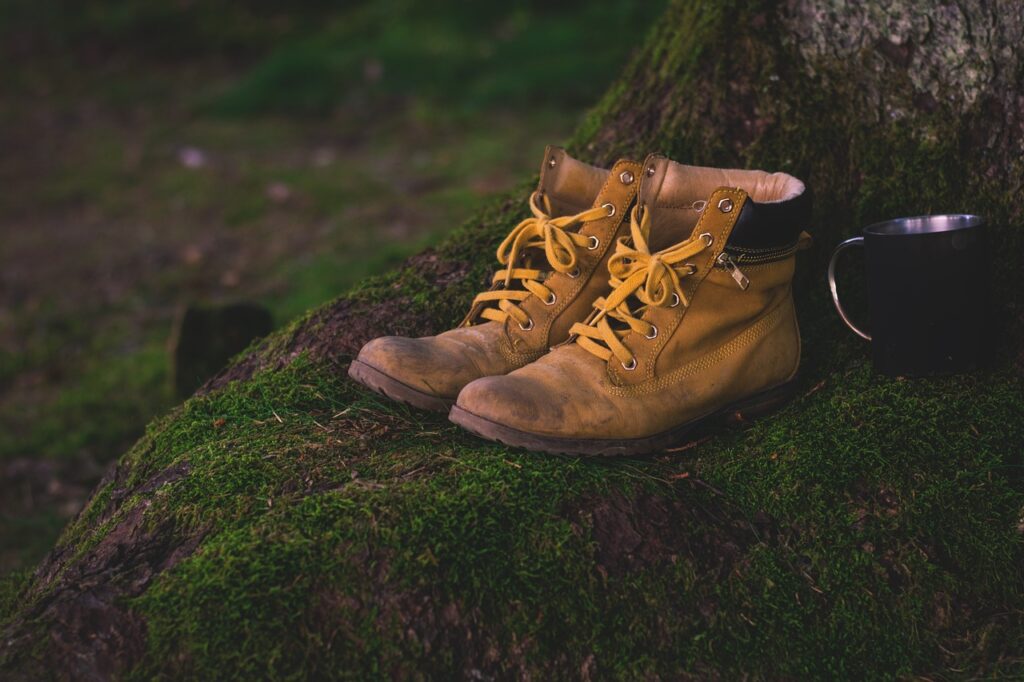Embarking on a hiking adventure can be both exhilarating and challenging, but the key to a successful trek often starts with the right footwear. Hiking boots are not just about style—they are critical to your comfort, safety, and overall hiking experience. Choosing the right pair of hiking boots can make the difference between a smooth, enjoyable hike and a grueling, painful trek. In this comprehensive guide, we’ll walk you through everything you need to know to select the perfect hiking boots for your next outdoor adventure.
The Significance of Proper Hiking Boots
Hiking boots are designed to support and protect your feet during outdoor excursions, which can range from leisurely day hikes to demanding multi-day treks. Here’s why choosing the right hiking boots is so important:
- Support: Hiking boots offer ankle support and stability, reducing the risk of injuries from uneven terrain.
- Comfort: Well-fitted boots prevent blisters and foot fatigue, allowing you to hike longer and more comfortably.
- Protection: They shield your feet from rocks, roots, and other hazards, as well as from weather elements like rain and snow.
Types of Hiking Boots
Hiking boots come in various styles and designs, each suited for different types of hiking and terrain. Here’s a breakdown of the main types:
1. Day Hiking Boots
Description: Day hiking boots are designed for short to moderate hikes on well-maintained trails. They offer sufficient support and comfort for day trips but are not intended for extreme conditions.
Best For: Casual day hikes on established trails and easy to moderate terrain.
Pros:
- Lightweight and comfortable
- Less break-in time required
- Good breathability and flexibility
Cons:
- Limited support for heavy loads or rough terrain
- Not suitable for extended or challenging hikes
Example Models: Merrell Moab 2 Mid, Salomon X Ultra 3 Mid GTX, Columbia Redmond V2
2. Midweight Hiking Boots
Description: Midweight hiking boots offer a balance between support and flexibility. They are suitable for longer hikes and more challenging terrain, providing better ankle support and durability.
Best For: Multi-day hikes, rougher terrain, and moderate backpacking trips.
Pros:
- Enhanced support and stability
- More durable and protective
- Versatile for various conditions
Cons:
- Heavier than day hiking boots
- May require a longer break-in period
Example Models: Keen Targhee III Mid, Lowa Renegade GTX Mid, Scarpa Zodiac Plus GTX
3. Heavy-Duty Backpacking Boots
Description: Heavy-duty backpacking boots are built for rugged terrain and heavy loads. They offer maximum support, durability, and protection, making them ideal for extended treks and challenging conditions.
Best For: Multi-day backpacking trips, alpine hiking, and off-trail adventures.
Pros:
- Superior ankle and foot support
- Built to handle heavy loads and rough terrain
- Excellent durability and protection
Cons:
- Heavier and less flexible
- Requires significant break-in time
Example Models: La Sportiva Nepal Cube GTX, Asolo Fugitive GTX, Oboz Bridger BDry
Key Features to Look For
When selecting hiking boots, it’s essential to consider several key features to ensure they meet your needs. Here’s what to look for:
1. Fit and Comfort
- Proper Sizing: Hiking boots should fit snugly but not be too tight. Ensure there’s enough room for your toes to move without rubbing.
- Arch Support: Choose boots that offer adequate arch support for your foot type to prevent discomfort and fatigue.
- Padding: Look for boots with sufficient padding around the ankles and heels to prevent blisters and chafing.
2. Ankle Support
- Height: Higher boots provide better ankle support and protection, especially on uneven or rough terrain. Consider the height of the boot based on your hiking needs.
- Stability: The boot should offer good ankle stability to prevent rolling or twisting injuries.
3. Traction and Outsole
- Tread Pattern: The outsole’s tread pattern should provide good traction on various surfaces, including wet, muddy, or rocky terrain.
- Material: Rubber outsoles with deep lugs offer better grip and durability. Ensure the outsole is durable enough to withstand extended use.
4. Waterproofing
- Membrane: Waterproof membranes, such as Gore-Tex, keep your feet dry in wet conditions while allowing moisture to escape.
- Seam Sealing: Check for sealed seams and waterproof treatments to enhance water resistance.
5. Breathability
- Ventilation: Look for boots with breathable materials or mesh panels to keep your feet cool and dry during strenuous hikes.
- Lining: A breathable lining helps manage moisture and temperature, preventing overheating and excessive sweating.
6. Durability
- Materials: Choose boots made from high-quality leather or synthetic materials that can withstand rough terrain and weather conditions.
- Construction: Ensure the boots are well-constructed with reinforced stitching and durable hardware for long-lasting performance.
Trying On Hiking Boots: Tips for a Perfect Fit
Finding the right fit is crucial for comfort and performance. Follow these tips when trying on hiking boots:
1. Try Them On with Hiking Socks
- Wear the socks you plan to use for hiking to ensure a proper fit. Thick or moisture-wicking socks can affect the fit and feel of the boots.
2. Check for Toe Room
- Ensure there’s enough space in the toe box to wiggle your toes without feeling cramped. You should have about a thumb’s width of space between your toes and the front of the boot.
3. Walk Around
- Test the boots by walking around the store or on a treadmill to simulate hiking conditions. Pay attention to any pressure points, rubbing, or discomfort.
4. Adjust the Laces
- Lace up the boots properly and make adjustments to ensure a snug fit. Proper lacing helps secure your foot and prevent heel lift.
5. Consider the Break-In Period
- Be aware that new hiking boots may require a break-in period. Wear them around the house or on short walks before taking them on longer hikes.
Maintaining Your Hiking Boots
Proper care and maintenance can extend the life of your hiking boots and ensure they perform well. Follow these tips:
1. Clean Regularly
- Remove dirt and debris after each hike. Use a soft brush and mild soap to clean the boots, and avoid submerging them in water.
2. Dry Properly
- Allow your boots to air dry at room temperature. Avoid direct heat sources, such as radiators or dryers, as they can damage the materials.
3. Condition Leather
- If you have leather boots, apply a leather conditioner to keep the material supple and water-resistant.
4. Check for Damage
- Regularly inspect your boots for signs of wear or damage, such as worn-out soles or loose stitching. Address any issues promptly to prevent further damage.
Conclusion: Step into Adventure with Confidence
Choosing the right hiking boots is a crucial step in preparing for your outdoor adventures. By considering the type of boots that best fit your hiking style, understanding key features, and ensuring a proper fit, you can find a pair that offers comfort, support, and protection on every trail. With the right hiking boots, you’ll be ready to tackle any terrain and enjoy the beauty of nature with confidence and ease. Happy hiking!







 #Hiking
#Hiking






